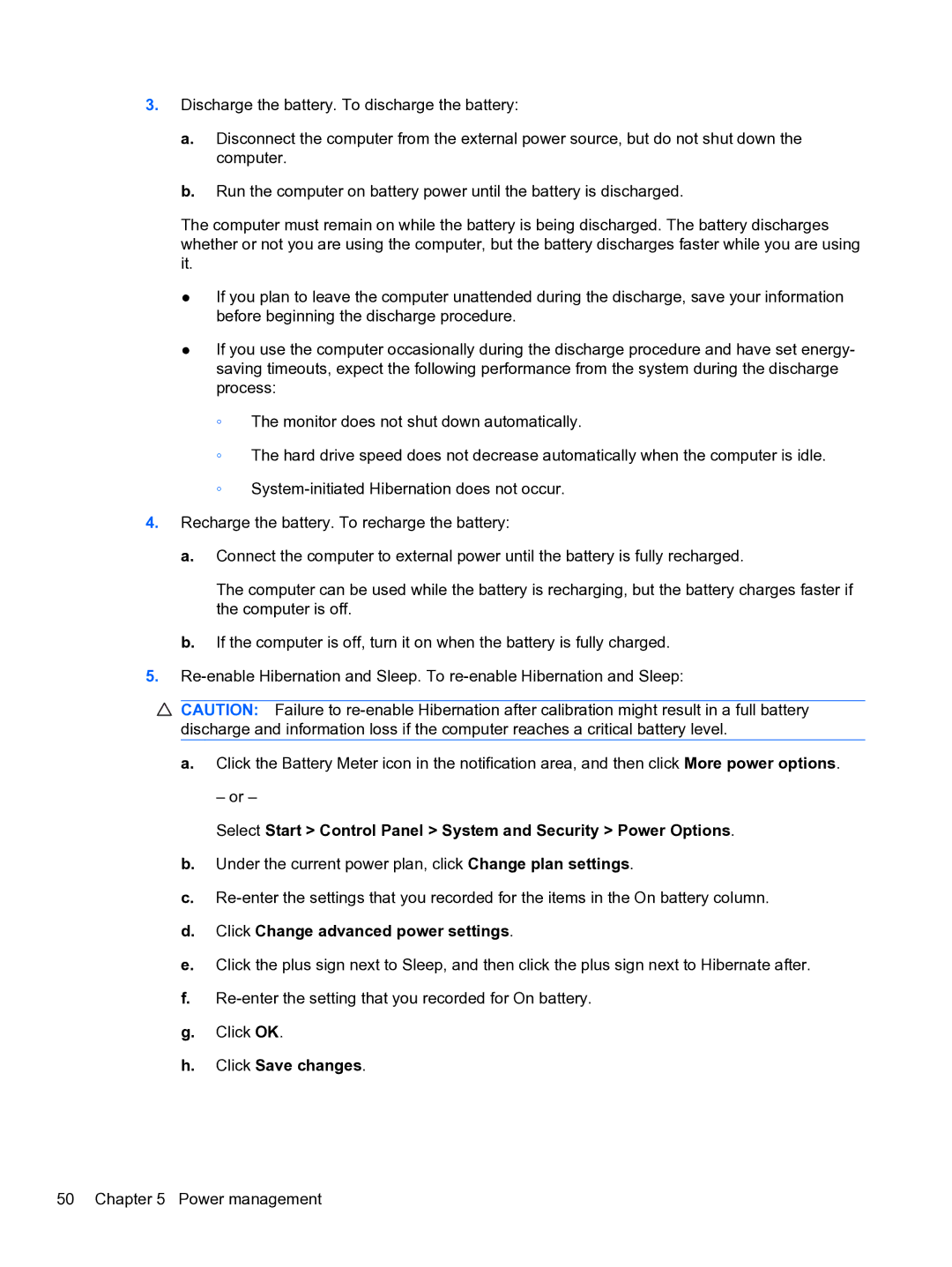3.Discharge the battery. To discharge the battery:
a.Disconnect the computer from the external power source, but do not shut down the computer.
b.Run the computer on battery power until the battery is discharged.
The computer must remain on while the battery is being discharged. The battery discharges whether or not you are using the computer, but the battery discharges faster while you are using it.
●If you plan to leave the computer unattended during the discharge, save your information before beginning the discharge procedure.
●If you use the computer occasionally during the discharge procedure and have set energy- saving timeouts, expect the following performance from the system during the discharge process:
◦The monitor does not shut down automatically.
◦The hard drive speed does not decrease automatically when the computer is idle.
◦
4.Recharge the battery. To recharge the battery:
a.Connect the computer to external power until the battery is fully recharged.
The computer can be used while the battery is recharging, but the battery charges faster if the computer is off.
b.If the computer is off, turn it on when the battery is fully charged.
5.
![]() CAUTION: Failure to
CAUTION: Failure to
a.Click the Battery Meter icon in the notification area, and then click More power options.
– or –
Select Start > Control Panel > System and Security > Power Options.
b.Under the current power plan, click Change plan settings.
c.
d.Click Change advanced power settings.
e.Click the plus sign next to Sleep, and then click the plus sign next to Hibernate after.
f.
g.Click OK.
h.Click Save changes.
50 Chapter 5 Power management
